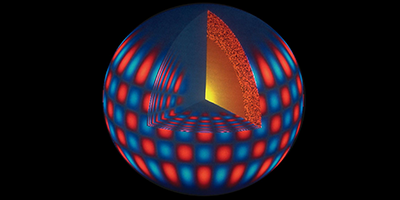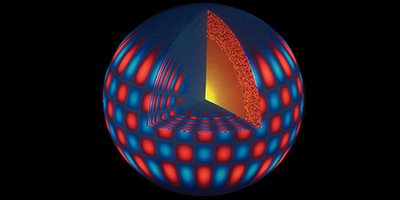Heat-Carrying Dark Matter in Sun
The brightest object in the sky may be hiding dark matter under its surface. To explain certain discrepancies between solar observations and theory, a new model proposes that a special sort of dark matter accumulates in the Sun and affects the transport of heat within the star.
The standard solar model, derived from measurements of solar luminosity and other observables, predicts the temperature and density profile inside the Sun. The model has been largely successful, but it has recently come into conflict with helioseismology observations that measure pressure waves propagating through the Sun. To resolve the discrepancies, researchers have explored the possible effects of dark matter, which presumably collects in the Sun through collisions and gravitational trapping. However, theorists have so far been unable to find a dark matter model that improves the fit to solar data.
Aaron Vincent of Durham University in the UK and his colleagues have devised a dark matter scenario that appears to have the right effect on the Sun’s properties. Like previous studies, they assume the dark matter consists of very little antimatter (it is “asymmetric”), in which case there are effectively no annihilations that can decrease the dark matter density inside the Sun. Their novelty is to assume that dark matter interactions with normal matter depend critically on the momentum change during particle collision. They show that dark matter particles fitting this description could carry a significant amount of heat from the core to the outer solar layers. The result would be a reduced temperature gradient that matches helioseismology measurements better than the standard solar model. The team also verified that their dark matter candidate is consistent with all existing constraints from dark matter searches.
–Michael Schirber
This research is published in Physical Review Letters.





